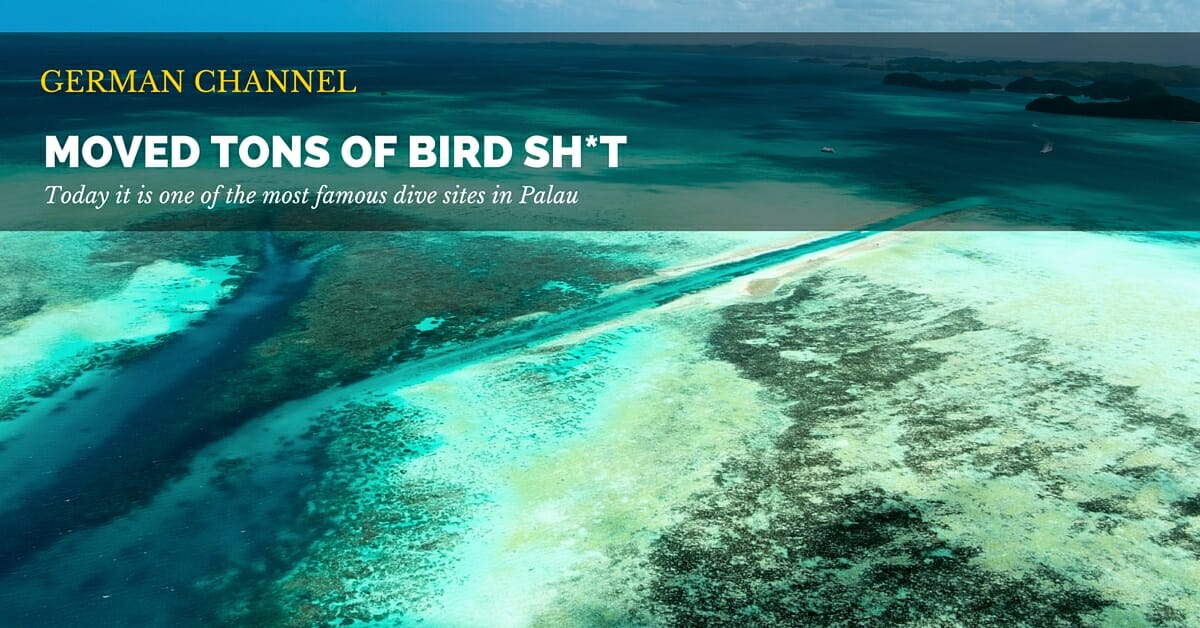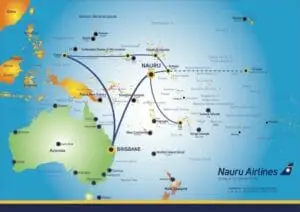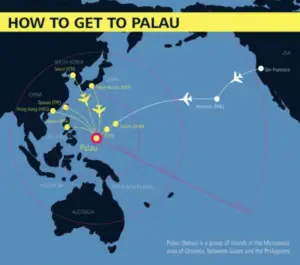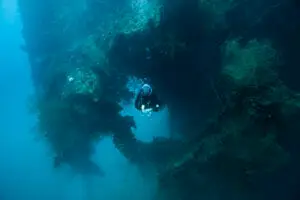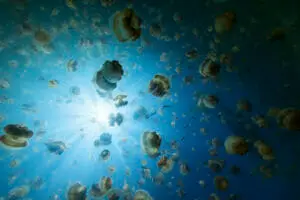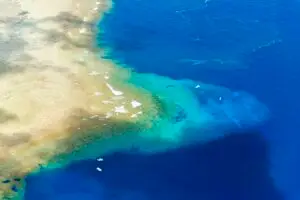Today German Channel is one of the most epic dive sites here in Palau. But a century of nature’s work has mostly hidden the fact that this dive site is actually the work of man and not nature.
Local dive shops and the internet will tell you that the Germans blasted and dredged a channel through the barrier reef between Ngemelis and Ngercheu, to allow phosphate to be moved to port for shipment to Europe. This information seldom includes the impact the channel indirectly had on the development of Palau or that it is all sh*t. Not the information, but the product.
In 1905, Germany discovered that the southern island of Angaur was plentiful in guano which is a valuable source of phosphate. Guano is the excrement of seabirds, cave-dwelling bats, and seals.
Originally sourced from Peru in the 1840’s guano was sought after as a fertilizer and in some cases refined for gunpowder. It was so high in demand that in 1856 The US Government created the Guano Islands Act which allowed any US citizen to claim any unclaimed island rich in Guano and for that island to immediately become a US territory.
As the backwater of the area Palau was seldom visited
While Spain had been active in the region since the 1500s, the first extended contact was in 1783 when the vessel Antelope, under the command of English Captain Henry Wilson, was shipwrecked in the Rock Islands. Between then and 1850 it was estimated that only 120 ships called into the islands of Palau.
In the 1850s, both Germany, and Spain and to a lesser extent England were looking to expand their influence in the world, and German merchants started to visit the area more frequently. In 1885, both Germany and Spain reached out to claim Yap and by extension the Caroline Islands including Palau.
On the 21st of August 1885, The Spanish ship San Quintîn arrived in Yap carrying a new Governor General, priest, soldiers and construction workers to claim the Caroline Islands for Spain and to build the government building.
The governor did not like the location they landed for his office and spent three days searching for a better place. When they returned to the ship, they found that the German cruiser Iltis had arrived and under the cover of darkness had landed a party that built a flag pole, raised the German flag and declared it a German Territory.
German channel was almost Spanish channel
When news reached Europe, there were violent protests in Spain against Germany. The German government suggested they would reach out the Pope to arbitrate the dispute. Pope Leo XIII asserted Spain’s rights over the Caroline Islands, however, granted Germany trading and mining rights.
The German New Guinea Company was founded during this time frame (between 1870 and 1880), a commercial company with a government mandate to manage German territory in New Guinea. As a result of the Pope’s decision, The company expanded, and they set up a trading post in the Caroline Islands including Palau.
Other than a few small trading posts, the German government had little to do with Palau. They did require that German would be added to the curriculum taught in schools. However, the schools themselves were run by missionaries.
The Spanish-American war of 1898 saw Spain lose its colony in the Philippines and therefore its control over the other territories in the region. After their navy was entirely destroyed, they sold the Caroline Islands – which the pope asserted to the Spanish four years earlier – to Germany. Germany added the purchase to Germany New Guinea and replaced the commercial operation with a government organization.
Before bird sh*t Copra was the primary industry
Copra is the dried meat, or dried kernel, of the coconut used to extract coconut oil and is still an important trade product of Palau. In 1907, the Germans set up two phosphate mining operations in the area.
One on the small island of Nauru which is part of Australia and the other on the southern island of Angaur wich is part of Palau and lies southwest of Peleliu. When Palau was under the control of Spain, the government mostly respected the local customs. The German administration and the German companies did not.Palau has a matriarchal society, while the village elders are males, and they rule the village they are more administrators, it is the women who make the important decisions.
SAG attempted to buy the island from the two matriarchs, however, they refused to even consider it. The company then approached two elders, and the SAG was able to purchase the island of Angaur for ₤60. The women again refused to agree, and the company forced the villagers to move to a small portion of the island, less than 5% of the total land area.
Angaur was estimated to have two million tons of guano. Mining it was hard work but fairly simple, the vegetation was cleared and the exposed phosphorous layer was broken in pieces small enough to be loaded into ore cars.
The company used German supervisors and managers, but most of the workers were from China or Yap. Those from Yap often had “patrons” who received the workers wages. Workers were working on a six-month contract, living in barracks and working every day. The island earned the reputation of the “village of the dead”.
In 1911, the Germans blew up a section of the reef in front of the island and dredged a channel to provide a direct and safe passage from the island to Koror, where ships would pick up the cargo and take it to Europe.
Between 1909 and 1913, SAG mined 236,087 tons of phosphate from Angaur. The average mining cost to SAG was RM9 per ton and it was sold at RM30 a ton. A very nice profit. The government’s profit for those four years exceeded the profits of that the German New Guinea Company had in the previous 30 years. In all, over 3.25 million tons of phosphorus was mined from the island.
The outbreak of WWI, saw the Japanese taking over Palau, and they continued the mining operation until WWII. The US continued mining on a limited scale after WWII, halting entirely in the 1950s. There is no record when the channel was last used to transfer the guano.
Today, boats transport tourist and divers through what is now know as German channel. Manta rays and other sea life have accepted the shortcut into the lagoon. Divers see a healthy growth of coral and abundant marine life, and its original purpose is fading into history.
Please feel free to contact us directly if you would have any questions. We love to hear from you.

